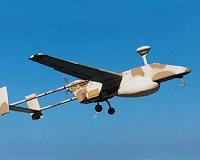| . |  |
. |
Washington (AFP) April 13, 2011 Pentagon chief Robert Gates on Wednesday warned that major cuts to US defense spending planned by President Barack Obama would require scaling back military forces, missions and capabilities. The Pentagon's stern response came after Obama unveiled a deficit-reduction plan that includes a proposed cut of $400 billion in security spending by 2023. Although the defense secretary believed the Pentagon could not be "exempt" from efforts to reduce the rising deficit, deep cuts in military spending in coming years would require difficult choices and could not be merely a "budget math exercise," Pentagon press secretary Geoff Morrell said. "The secretary has been clear that further significant defense cuts cannot be accomplished without reducing force structure and military capability," Morrell said in a statement. The warning suggested a rift between the White House and the defense secretary, who has cautioned previously that dramatic cuts in military spending could have "catastrophic" consequences. Gates apparently played no role in drafting the president's plan, as he had only learned of Obama's proposal for defense spending on Tuesday, Morrell said. "We just got this direction," he said. Asked if Gates was angered over the deficit-reduction proposal, Morrell said he would not characterize the defense secretary's personal reaction -- only his "professional" reaction to the plan. Gates, a Republican holdover from George W. Bush's administration, has cancelled or cut back a number of big ticket weapons programs but argued against dramatic cutbacks. Morrell said Gates supported the president's plan to hold a thorough review of military missions before deciding on spending cuts over ten years. "The comprehensive review of missions, capabilities, and America's role in the world will identify alternatives for the president's consideration. "The secretary believes that this process must be about managing risk associated with future threats and national security challenges and identifying missions that the country is willing to have the military forgo," he said. In his high-stakes speech on the deficit, Obama said that savings had to be found in defense spending and not just in domestic programs. Obama said that Gates had already shown political courage by cutting waste and finding $400 billion in savings over the past two years. "I believe we can do that again," Obama said. According to the White House, Obama's plan "sets a goal of holding the growth in base security spending below inflation, while ensuring our capacity to meet our national security responsibilities, which would save $400 billion by 2023." The White House did not specify what weapons programs or forces might have to be cut to meet the goal. Part of the savings could come from the scheduled withdrawal of the remaining US troops from Iraq by the end of the year, as well as a planned drawdown of nearly 100,000 forces in Afghanistan starting in July. Republicans and some Democrats in Congress tend to view defense spending as sacrosanct, seeking to find savings elsewhere in the federal budget. But fiscal pressures have prompted calls to consider scaling back the country's vast defense budget, by far the largest in the world. The defense budget for 2010 came to about $680 billion and the price tag for the wars in Afghanistan and Iraq since 2001 has surpassed one trillion dollars. Morrell said it would take time for military leaders to conduct a review of Pentagon spending and their recommendations would likely not be ready in time to influence the proposed defense budget for fiscal year 2012. "It will not be done in time to affect the FY '12 defense budget, so it will likely be reflected in the FY '13 budget submitted early next year," he told reporters. With Gates saying he plans to step down later this year amid speculation he could leave over the summer, the difficult decisions on defense spending will likely be inherited by his successor -- who has yet to be named. Gates told the chiefs of the armed services that the president's plan marked the start of a process "and not the conclusion," Morrell said. Military leaders "should not allow it or the ensuing debate to distract them from doing what is necessary to fight and win the conflicts which we are currently fighting."
Share This Article With Planet Earth
Related Links The Military Industrial Complex at SpaceWar.com Learn about the Superpowers of the 21st Century at SpaceWar.com
 Elbit And IAI Establish Joint Company
Elbit And IAI Establish Joint CompanyHaifa, Israel (SPX) Mar 21, 2011 Elbit Systems has announced the signing of a founder's agreement (the "Agreement") with Israel Aerospace Industries ("IAI") to establish a joint company and a limited partnership (collectively the "Joint Entity") to perform a potential project of purchasing and maintenance of advanced training aircraft, as well as additional services (the "Project"), for the Israeli Ministry of Defense (the "MoD ... read more |
|
| The content herein, unless otherwise known to be public domain, are Copyright 1995-2010 - SpaceDaily. AFP and UPI Wire Stories are copyright Agence France-Presse and United Press International. ESA Portal Reports are copyright European Space Agency. All NASA sourced material is public domain. Additional copyrights may apply in whole or part to other bona fide parties. Advertising does not imply endorsement,agreement or approval of any opinions, statements or information provided by SpaceDaily on any Web page published or hosted by SpaceDaily. Privacy Statement |